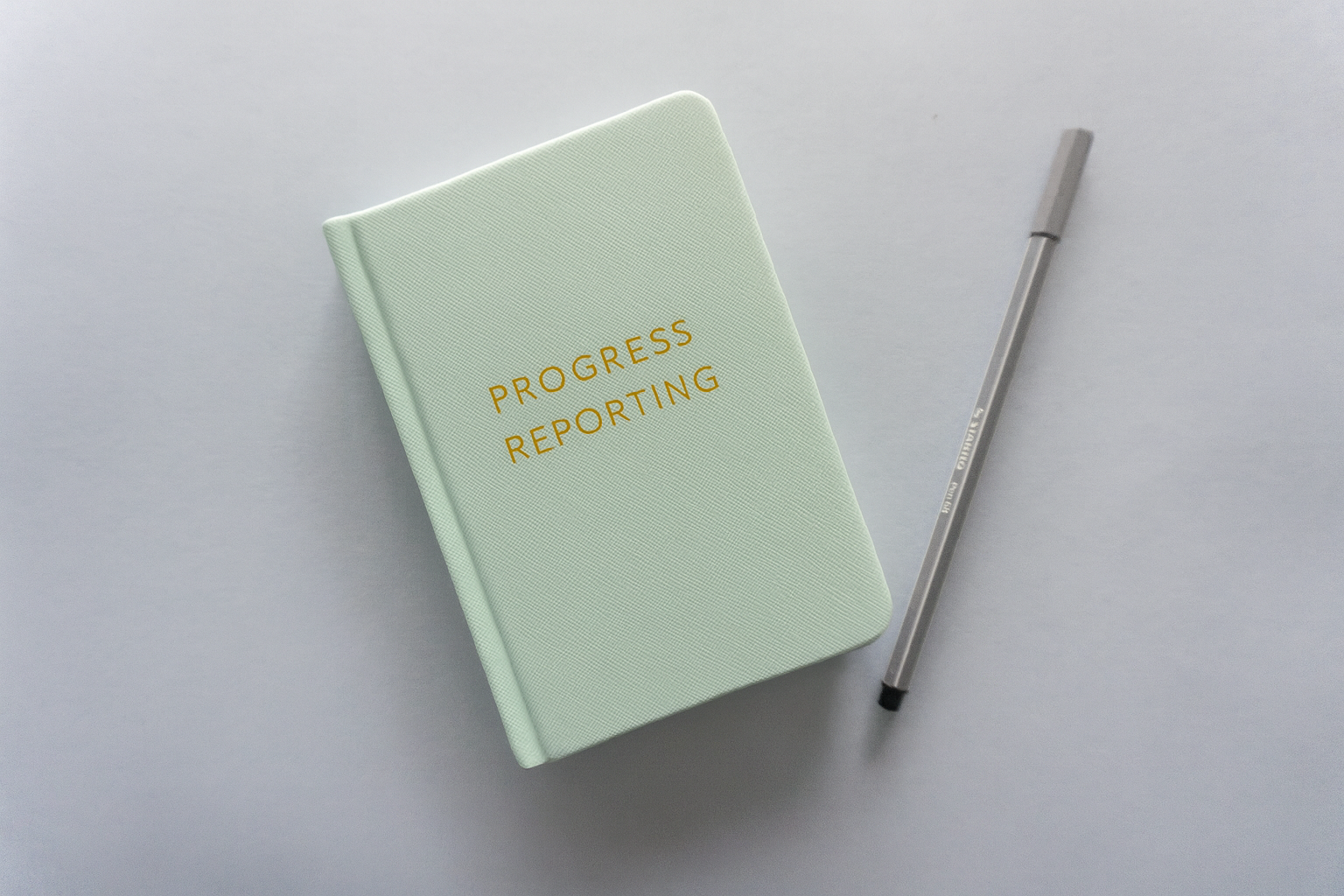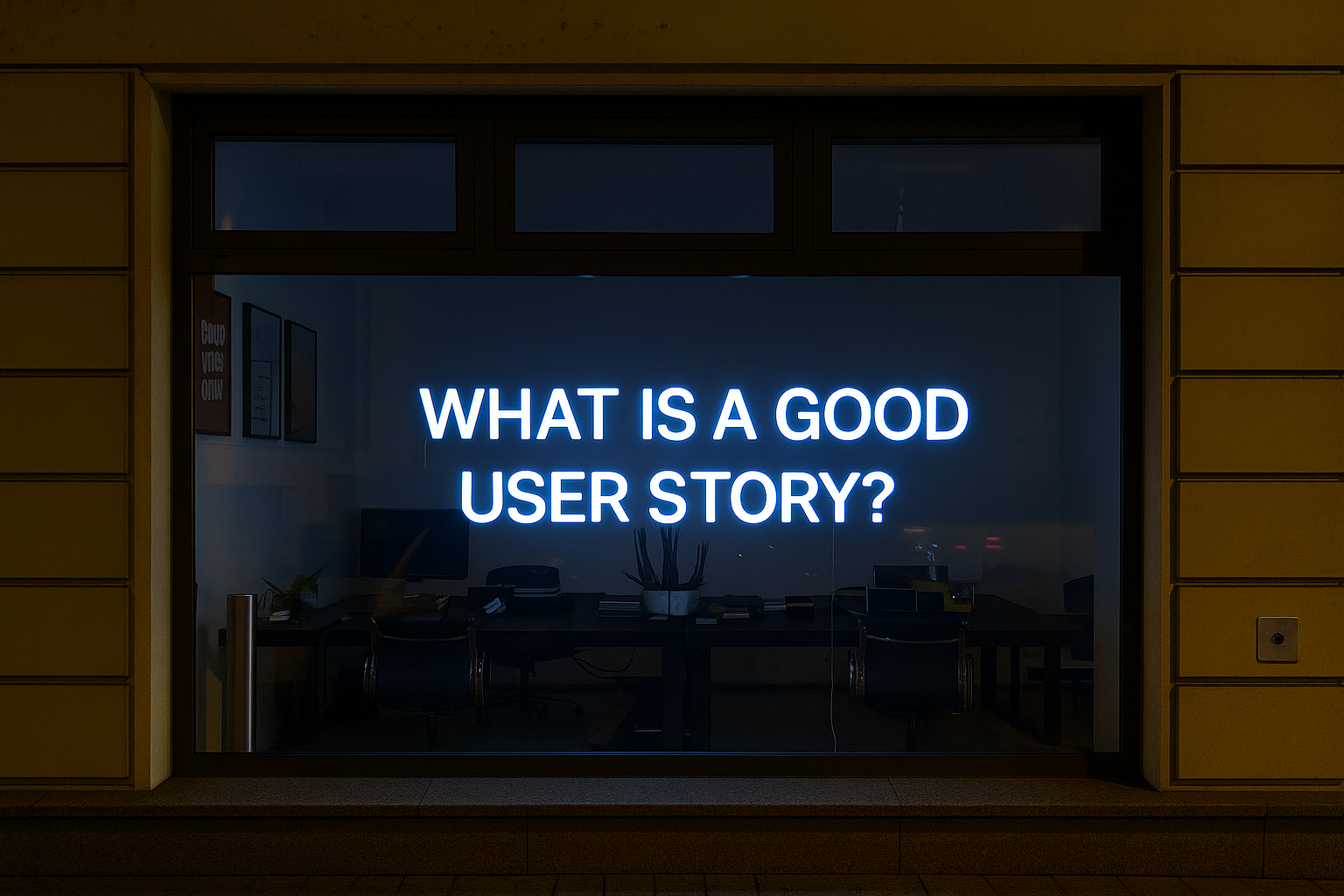
Daily stand-ups are lightning-quick, 15-minute touchpoints that help Agile teams share what they did yesterday, what they will do today, and which blockers need attention. Progress reports play a different game: they roll a whole sprint or week into an easy-to-scan project status report for product owners and executives, surfacing outcomes, risks, and pending decisions. WIARA keeps its progress updates on a single page with three fixed headings: Momentum, Blockers, and Decisions, so every stakeholder sees progress, risk, and requests in seconds.

Before we head into the know-how, let me tell you this much. Progress reports are essential in any project lifecycle. And yet, most can feel like a scrolling list of Jira IDs. You finish reading and still ask:
Are we moving forward? What’s in the way? What needs my approval?
At WIARA, a client-focused organization, we decided to answer these questions upfront in our progress reports. How do we do this? By keeping things tidy and straight to the point. We rebuilt our progress-report template around three simple prompts:
That structure alone turns a dull ticket dump into a concise, client-ready narrative that clearly shows value, highlights risk, and also invites fast decisions. But first, let’s look at why old-school status reports fail and then later compare how our method brings clarity and speed.
New to Agile and wondering why you need both ceremonies? The daily stand-up syncs the team internally and surfaces blockers in real time. A progress report zooms out, giving sponsors an executive-level project status update that bundles outcomes, risks, and decisions. Both honour Agile values of transparency and collaboration, but they operate at different altitudes and frequencies.
Now, let’s examine why simple ticket dumps leave stakeholders frustrated and how this creates unnecessary risks for projects.

Most teams still export raw ticket statuses with little context, and that creates headaches for everyone involved. Many of you already have certain projects from your own experiences in mind. Keep them in mind as we move forward.
Activity ≠ outcome
A Done tag proves people were busy, not that key milestones were missed.
Hidden risk
Blockers stay invisible until a deadline slips. We lists late risk discovery as a top reason projects miss targets.
Decision debt
Key choices disappear in chat threads; teams re-debate and delivery stalls. Axify reports that well-run sprint reviews, where decisions surface early, lift stakeholder satisfaction by roughly 30%.
When reports lack structure, trust erodes, meetings multiply, and roadmaps drift.
Common alternatives often fall into one of three camps:
• Status dashboards are great at raw ticket metrics, weak on narrative or decision tracking.
• Gantt charts show timelines, ignore blockers, and ownership.
• Long-form narrative reports rich detail, but readers drown in text.
Why WIARA’s tri-fold focus excels
Momentum–Blockers–Decisions balances progress, risk, and requests without cognitive overload. Decision tracking, missing in most formats, is the proven antidote to approval delays. If a project has many streams, spin up one tri-fold per stream rather than bloating a single doc.

MomentumTwo crisp sentences tie shipped work to a KPI, then a screenshot or 15-second screenrecording proves it. Visual cues boost comprehension and retention by more than 6×.
BlockersEach issue lists its impact, owner, and target resolution date. Early visibility keeps surprises off the calendar.
DecisionsWe record choices already made and calls still pending, tagging each with an owner and due date. The public ledger slashes decision debt and keeps accountability obvious.
Keeping these headings in the same order every week means readers always know where to look first.
Progress reporting best practices always centre around clarity. Use a consistent template. Reusable pages save prep time and standardise tone, exactly what Asana recommends for progress-reporting best practices. Write in plain English so finance leads stay as engaged as engineers. Add visuals: charts, GIFs, dashboards, to turn long text into a quick insight, Include the next milestones, upcoming risks, and a short forecast so expectations stay realistic.
Publish on a predictable cadence. Weekly work for most projects; add a mid-sprint pulse if risk spikes. Regularity signals professionalism and keeps momentum rolling.
Writing concise but impactful sentences
• Start with the result: “Login success improved from 85% to 98% after integrating the authentication module.”
• Tie every win to a KPI; credibility matters.
• Two sentences per momentum item: what happened and why it matters.
• For blockers, stay action-oriented: issue → impact → owner → due date.
Designing visual cues that work
• Use bar charts for progress vs. target, line charts for velocity, and pie charts for resource split.
• Drop 15-second screenrecordings to demo UI fixes.
• Embed real-time dashboards (Power BI, Data Studio) for execs who love drill-downs.
• Tools we like: Canva or Google Slides for quick graphics, Loom/Vidyard for video, Jira/Asana charts for auto-updates.

Transparent Agile progress reports build client trust; LaunchNotes links regular, honest updates to stronger stakeholder relationships.Blockers get resolved faster because every issue is owned, dated, and tracked in plain sight.Decision latency shrinks, echoing industry data that logged decisions can cut approval cycles by 25%.The result: clients view the team as “the adults in the room,” calm and professional even under pressure.
Let’s look at some examples from our work to see how it can impact the results:
Example 1 – Cutting Delay Time by 30%
We were running a complex software-integration project that kept stalling on vague blockers. Once the team logged every obstacle in the Blockers section with clear owners and target dates, average delay time fell by 30% and last-minute surprises vanished.
Example 2 – Doubling Stakeholder Satisfaction
During another case, a multi-stakeholder IoT rollout, updates now headline tangible wins such as “Sensor coverage up 20%” and spell out blocker impact and decisions. Post-launch surveys showed stakeholder-satisfaction scores had doubled thanks to easier decision-making and clearer insight.
Example 3 – Preventing Costly Fixes
And in the final example, while rebuilding a mobile app, the Blockers column flagged an expiring third-party API contract two sprints early. Valuable information that could have been missed otherwise. That early visibility triggered a quick renegotiation and saved a potential outage and a fat emergency bill.
To confirm the difference for your projects after using our favorite methodology, track these numbers over a few sprints:
• Meeting minutes saved — shorter status calls mean the report is doing its job.
• Blocker-resolution time — days from flag to fix should trend down.
• Stakeholder-clarity score — quick pulse survey after each report.
• Decision turnaround — hours from request to sign-off.
Trust us, showcasing these KPIs will turn progress reporting best practices into a measurable ROI story.
Here is a quick look at some common points of uncertainty you might run into and suggested ways to deal with them:
Q: What if a blocker is still vague?
A: Log it as “Risk Under Investigation.” Describe the symptom, assign someone to chase the root cause, and set a check-in date. Transparency beats radio silence.
Q: Stakeholders ignoring decision requests?
A: Escalate in the next report: “Decision pending — escalation required by Friday.” Pair the note with a direct ping or meeting invite to keep momentum.
Q: How do I stay brief on big, messy projects?
A: Layer your info. Keep the main page tight, then link to appendices or collapsible details for anyone who needs the weeds.
Q: What if the decision impacts multiple teams?
A: Clearly list all affected teams and stakeholders, assign a single owner to coordinate input, and set a shared deadline. This keeps accountability clear and prevents oversights.
Q: How often should I update the progress report?
A: Aim for a regular, predictable cadence weekly is common for most sprints. Increase frequency if risks rise or stakeholders need faster updates. Consistency builds trust and keeps momentum steady.

Progress reports aren’t admin overhead; they’re strategic steering wheels. Frame every update around Momentum, Blockers, and Decisions, and you deliver clarity, speed, and trust, the trifecta for high-performing, Agile-ready projects. We invite you to try the framework next sprint, watch follow-up meetings shrink, and see stakeholder confidence climb. Own the narrative, own the outcome, and your team stands out as the mature partner clients rely on. Here are some final thoughts to get you started:
Don’t let your progress reports be just another checkbox. Start with WIARA’s Momentum, Blockers, and Decisions framework next sprint, and watch your team’s impact and client trust soar. Own your narrative, own your outcomes, and become the partner your clients rely on even under pressure.
Let’s build smarter systems that grow with your business.
FAQ
Frequently Asked Questions

A progress report shows development over a period, including risks and decisions needed. A status report is a snapshot of the project at one moment, often focused on metrics without context. The described approach in this article emphasizes ongoing narrative and decision tracking that status reports often miss.
Yes. Visuals like charts, screenshots, and short videos improve understanding and engagement. The described approach in this article uses these to make reports easier to digest and more impactful.
“Login success improved from 85% to 98% after integrating the authentication module, reducing user drop-off.” This ties an achievement directly to a KPI in a concise way.
Momentum: value delivered. Blockers: issues slowing progress. Decisions: approvals or actions needed soon. This structure keeps reports focused and balanced.
Sharing raw ticket lists without context. This overwhelms readers and hides key risks or decisions. The described approach in this article stresses clear, client-ready reports that highlight what matters.
Further Thinking

Avoiding the Trap of Over-Detailing User Stories

Remote Project Management Best Practices: Real-Life Tips for Global Teams

How to Prioritize Features Without Fighting About It - Part 1

What’s in a Sprint? How We Plan, Execute, and Improve Every 2 Weeks

The True Purpose of Daily Standups (And How to Make Them Work)

Five Ways to Write Good User Stories (Including Examples)

What Is Agile Really Like?

The WIARA Project Delivery Playbook: How We Manage Agile Projects from Kickoff to Launch